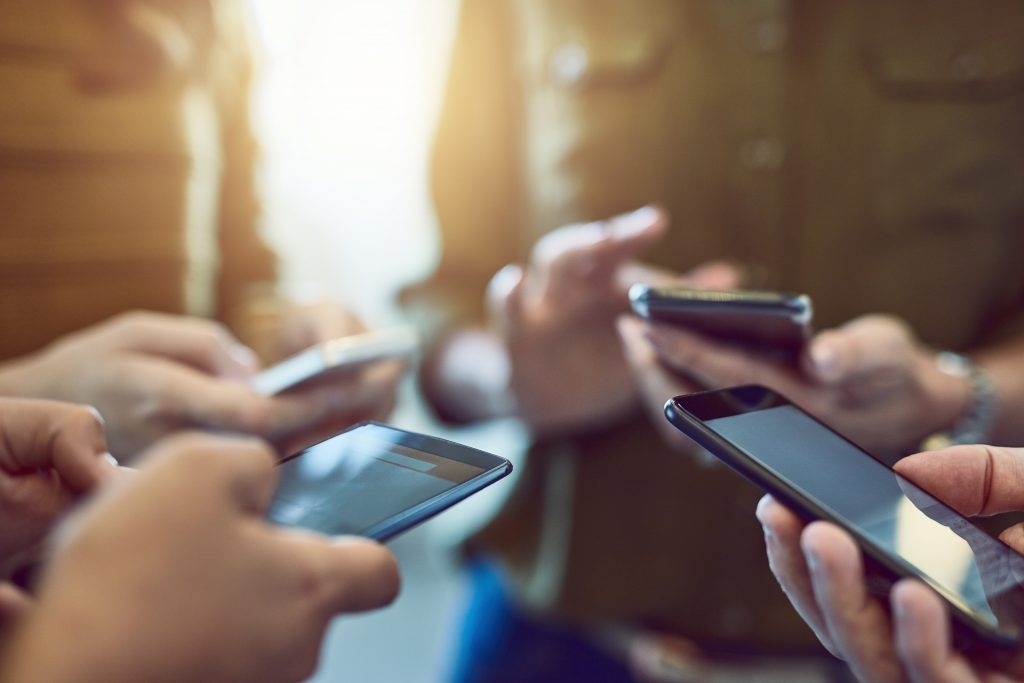
Los Angeles Unified School District Board of Education. (Photo: LAUSD)
Pouches, Lockers, And Trusting Students: The Options For Enforcing The LAUSD Cell Phone Ban
The LAUSD currently favors either a locker or pouch system
By Evan Symon, June 21, 2024 6:02 pm
The Los Angeles Unified School District (LAUSD) now has a cell phone ban in place for next year. Other school districts and even the state jumped onboard with a similar ban, after the recent U.S. Surgeon General announcement on cell phone addictiveness and health concerns. The question now becomes a hard one: How?
Attempts to limit cell phones in the past has become a hassle, as known very well by educators. Many students ignore teachers asking for the phone to be put away, or simply discreetly use it. Attempts to take them away have resulted in long diatribes about teachers taking away property So how would LA’s ban work? Well, currently there are a few options officially on the table.
- The honor system
This one is pretty much like what we have now, but with great discipline. Students get to keep their phones during the day, but have them turned off and out of sight during the day. Any violations would have progressive discipline.
The ACLU loves this plan and says it is the ideal one. However, most critics and experts have said that it is untenable, as teachers have had little success in L.A. already with the system currently like it.
The Globe talked with child psychologist Dr. Stacy Powers, who has advised school districts in 12 states to formulate similar ban policies, about the different options. For this one, Dr. Powers said that “Los Angeles is trying to stop learning distraction and improve students mental health. With the students keeping their phones like this, do you really think it will be successful? It would like giving an addict what they are addicted to and promising not to use it. It won’t work and is a bad idea. It shouldn’t be an option.”
2. Pouches
Pouches are also currently on the table. Under this plan, cell phones are placed in pouches during the day, magnetically locked at the top, and kept on the student during the day. At the end of the day, pouches are then magnetically unsealed. Many school districts have tried this across the country, reporting a great success. While some students have figured out how to open them during the day, a tough punishment for doing so has managed to deter most.
According to one Albany, NY area Superintendent “There have been instances where students have to be reminded, but overall, it has been really positive. Seeing students walking through the hall and socializing with their peers and teachers rather than looking at their devices is inspiring.”
In addition to schools, pouches have been successful in deterring cell phone use places like concert and theater venues where filming and cell phone use is prohibited, as well as certain flights.
“Pouches have a good track record, but for students, they get to hold that temptation,” added Dr. Powers. “We’ve tried this in many districts I’ve advised on and, well, students can get desperate. They’ll rip open the pouches with whatever means at their disposal, or have figured out how to magnetically open them. They do it despite knowing a major detention is on the way too.
“Other problems include some students staying late and not having anyone to unseal their pouch, the magnetic device to unlock them failing during the day, and exits slammed with high traffic as there is a rush to unseal them then make a bus. For L.A., they should do a test run during the summer to see if they can handle high peak students leaving to make sure no one is negatively affected.
3. Cell phone lockers
Another option considered by the LAUSD are cell phone lockers. These are the most popular option for many schools with day bans in effect. In fact, cell phone lockers have hundreds of buying options online, with many models even coming with chargers and unique pin codes for students. Like the pouches, the phones are placed in an area left locked until the end of the day, or when the student leaves. However, unlike the pouches, lockers remain in one place not on the student themselves. But they are also harder to open, as the lockers are metal with locks and are usually placed in areas that can be seen easily by school officials or faculty.
But, as another downside, they take up a lot of real estate in schools, with the lockers essentially adding even more lockers to hallways, classrooms or requiring a room of their own to be held in during the day.
“Yeah, this is the VHS or Betamax question for many schools right now,” continued Power. “The lockers or pouches. Lockers are definitely harder to break into. And, overall, the lockers have had the better success rate. But like you said, lockers also take up space.
“And they both have the problem where, at the end of the day, there is congestion around the areas where the lockers are as students want their phones ASAP. Pouches have only a few points with the magnets, and lockers are static with only one point.”
The way forward
So what is the answer? There are other options out there, including hybrid pouch plans for students to be able to open them at certain times like lunch and classes where they are needed. But these are the three most common in place today. And the latter two are the favorite ones that the LAUSD are considering for 2025.
“The solution comes down to the individual school,” explained Powers. “What LA needs to do is do test days during the fall or even during the summer. Find the choke points. Look at different layouts for the magnets and lockers. See which ones get the worst traffic in areas. Both ways have a similar psychological effect on students, but with the pouches being slightly better as the students physically have them on their person during the day and feel better knowing it is there. But for success rates, lockers have proven to be better.
“Pouches can also avoid any parental complaints that the students don’t have their property during the day. But it really comes down to what is best for each individual school, as they are laid out differently, have different numbers of students going there, and have different ages, with some not needing as drastic bans in place.
“Any way they do it, the first few months will be hectic, as students will continue to try any and all ways to get phones past the school. That the LAUSD needs to prepare on.”
Plans are likely to come out following the final LAUSD vote on the ban this fall.
- Bill to Require Law Enforcement Disclosure if AI Was Used To Help Write Reports - August 7, 2025
- Gov. Newsom Files FOIA Request To ‘Expose True Cost’ Of L.A. Federal Troop Deployment for Anti-ICE Riots - August 6, 2025
- California Redistricting: How Newsom’s Plan Will Demolish Hard Fought GOP Gains - August 6, 2025





For many reasons it is not going to work, thr district will have an issue with cell phone theft and parents will get pissed. There will be less instruction time as they require for teachers to be cell phone police. The most they can do is ask parents to support the idea of the kids keeping them out of sight when they come to school.
You are dealing with addicts in a prison type situation. Students will come up with an unbelievably long list of reasons why “they must” have their phone “right now” to put pressure on school officials. Some will bring two cellphones to school- one for school officials and one for them to secretly use. School officials will use cell phone confiscation as a disciplinary tool and jealous students will rat each other out. Yes, just like a prison.
The best plan is to not bring the cellphone to school at all.
Your article missing Multiered Safe Pouch that allow schools to regulate phones without sacrificing safety and connectivity. All teachers have a magnet to unlock it, so it streamline logistics and prioritize and students emergy